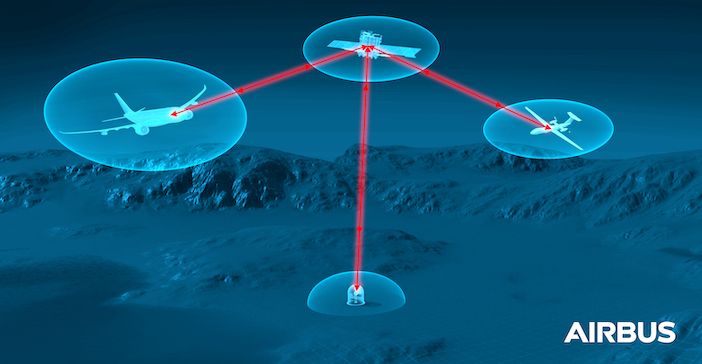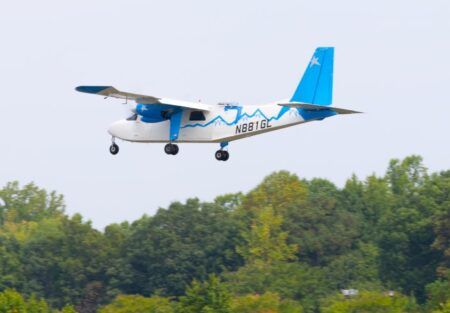Airbus has shifted a research program developing a laser-based satellite communications terminal for aircraft to the flight testing phase and is partnering with a Netherlands-based supplier to make it.
The use of laser links between satellites and terminals is seen as the next generation of satellite communications technology. The technology deals with several of the problems inherent with the use of radio frequency bands for communications, while significantly increasing data transmission rates and bandwidth and improving security and resilience.
The UltraAir terminal will be fitted to aircraft to enable laser-based communications with satellites. The communications improvements this would enable are seen as key to improving communication between military aircraft and drones during operations and to enabling more and better high-speed data connections for airline passengers.
UltraAir has been in development since April 2021 by Airbus and the Netherlands Organisation for Applied Scientific Research (TNO). Airbus is now working with Dutch industrial supplier VDL Group to further develop the terminal for production and to manufacture critical systems.
The two companies are preparing a prototype UltraAir terminal this year with a first flight test of it planned for 2024, with further industrialization and more flight testing planned for 2025.
UltraAir will enable the exchange of large amounts of data using laser beams in a network of ground stations and satellites in geostationary orbit at 36,000km above the Earth. The terminal will use a highly stable and precise optical mechatronic system, with data transmission rates of several gigabits-per-second.
The laser-based satellite communications capability provided by UltraAir would also provide anti-jamming and a low probability of interception. This makes the solution particularly attractive for future defense applications that involve “multi-domain” networking and autonomous systems.
UltraAir would use the SpaceDataHighway satellite constellation – a public-private project between Airbus and the European Space Agency. The SpaceDataHighway has achieved secure data transfer services at a rate of 1.8 Gbit/s in near-real time and tens of thousands of connections since it was launched in 2017.
According to Airbus laser communication brings 1,000 times more data, 10 times faster than current networks. Laser links also have the benefit of avoiding interference and detection, as compared to already-crowded radio frequencies which are extremely difficult to intercept due to a much narrower beam. This means laser terminals can be lighter, consume less power and offer better security than radio.





